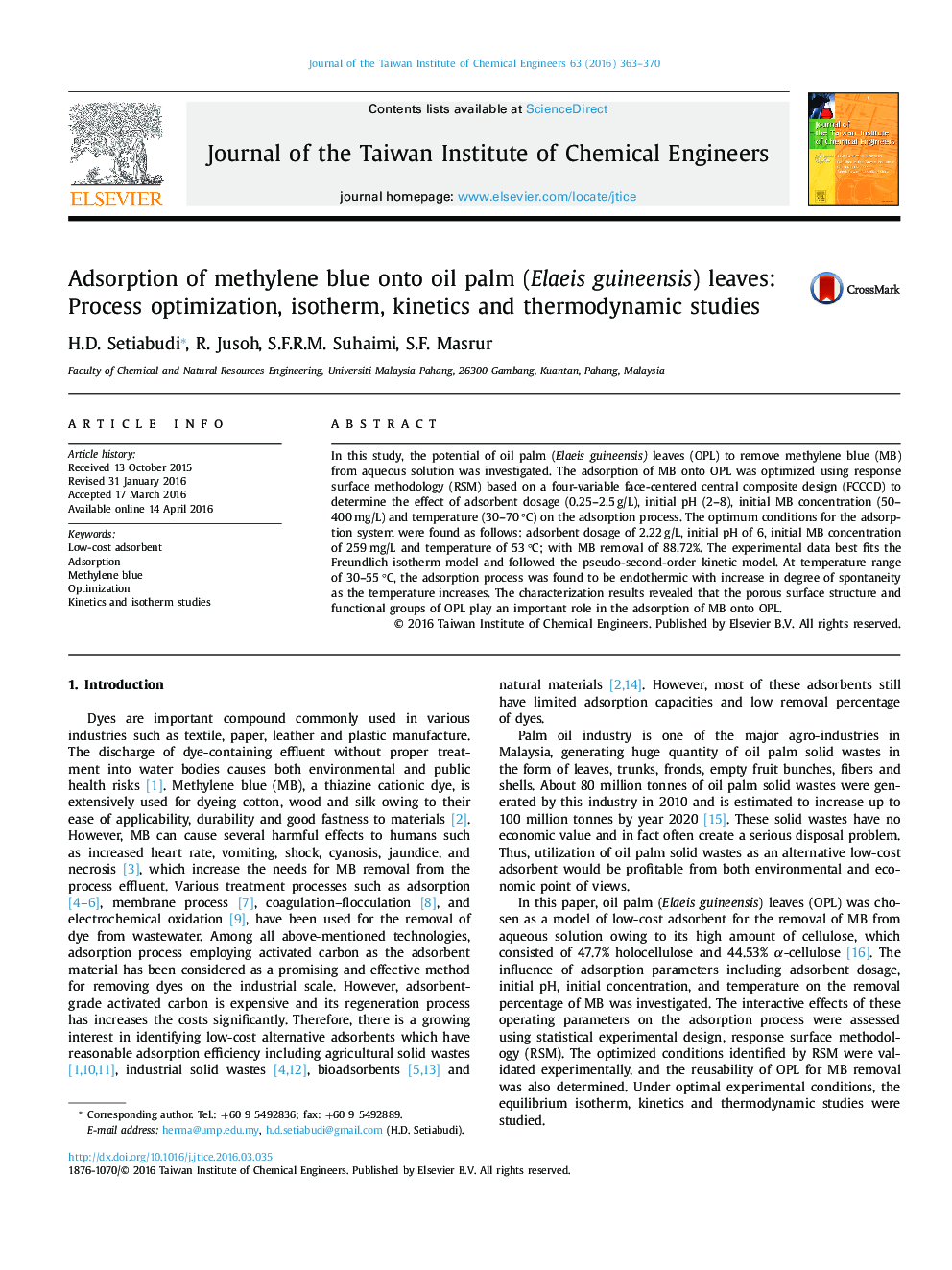| Article ID | Journal | Published Year | Pages | File Type |
|---|---|---|---|---|
| 690423 | Journal of the Taiwan Institute of Chemical Engineers | 2016 | 8 Pages |
•A new low-cost adsorbent was developed from oil palm leaves (OPL).•Optimized condition for methylene blue (MB) removal was determined using RSM.•The percentage of MB removal could reach 88.72% under the optimum conditions.•Adsorption occurs through the bonding of OPL functional groups with MB.
In this study, the potential of oil palm (Elaeis guineensis) leaves (OPL) to remove methylene blue (MB) from aqueous solution was investigated. The adsorption of MB onto OPL was optimized using response surface methodology (RSM) based on a four-variable face-centered central composite design (FCCCD) to determine the effect of adsorbent dosage (0.25–2.5 g/L), initial pH (2–8), initial MB concentration (50–400 mg/L) and temperature (30–70 °C) on the adsorption process. The optimum conditions for the adsorption system were found as follows: adsorbent dosage of 2.22 g/L, initial pH of 6, initial MB concentration of 259 mg/L and temperature of 53 °C; with MB removal of 88.72%. The experimental data best fits the Freundlich isotherm model and followed the pseudo-second-order kinetic model. At temperature range of 30–55 °C, the adsorption process was found to be endothermic with increase in degree of spontaneity as the temperature increases. The characterization results revealed that the porous surface structure and functional groups of OPL play an important role in the adsorption of MB onto OPL.
Graphical abstractFigure optionsDownload full-size imageDownload as PowerPoint slide
